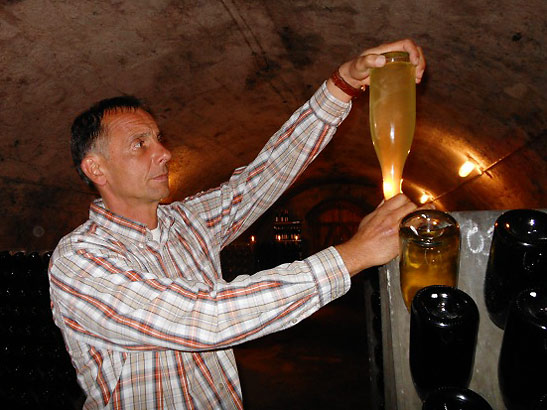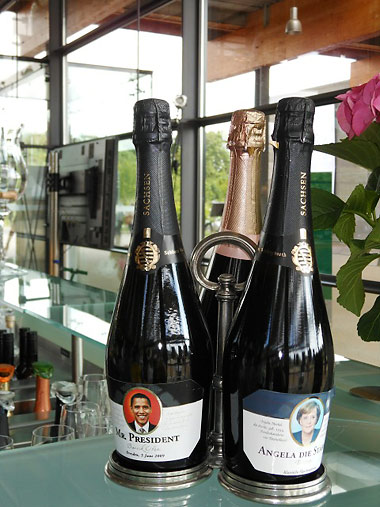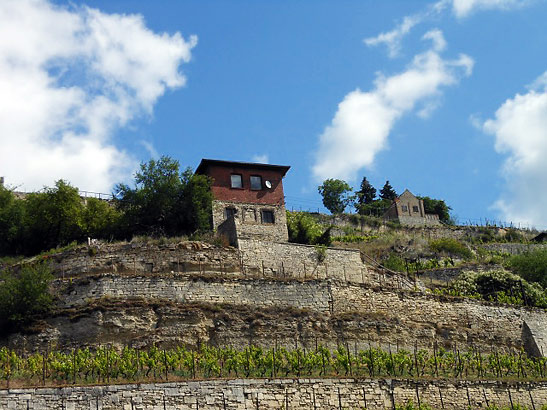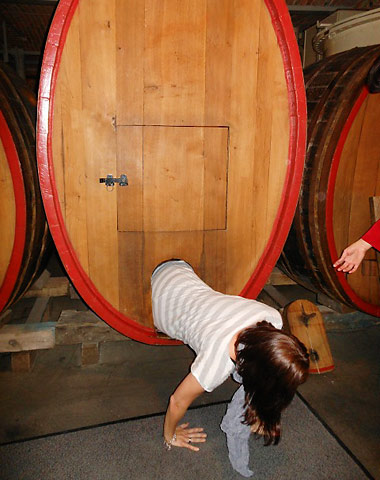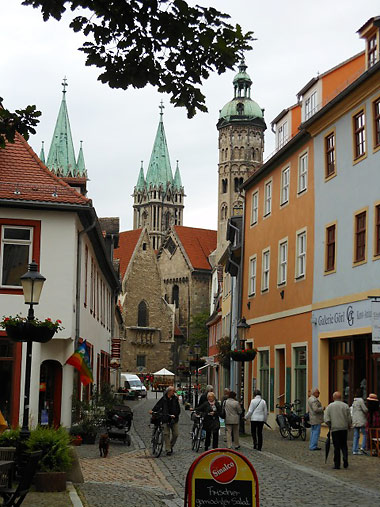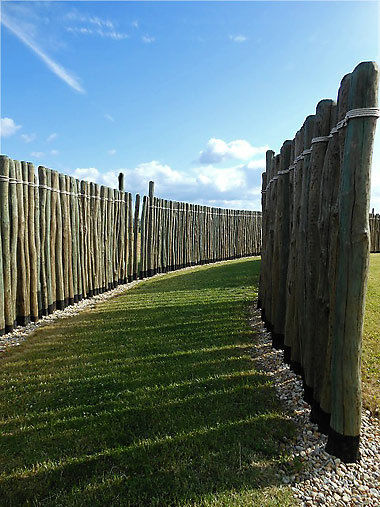 |
 |
|
 |

|
The Sparkle
of German Wine Tours
Asparagus and Wine Festivals May is white asparagus season in Germany. The plump stalks of the sweet, delicious vegetable are paired with Hollandaise sauce, or butter, and sometimes ham and boiled potatoes. They are on every restaurant menu, in every grocery store, in every market. The season is short – from April until June 26. When it’s over, it’s over. Silvaner is the Franconian grape of choice for a wine to accompany these lovely asparagus. Germans like slightly sweet wines but wines from both the Silvaner and Mueller Thuergau grapes can be fine and dry. Both grape types produce perfect wines to accompany those fat white asparagus. The wines of the Mosel and Rhine regions have a long-standing international reputation. Now the wines of other German regions, old, but obscure in recent years, are making their mark. In Franconia, one of Germany’s major wine producing regions, May is the month of wine festivals. Every May, Wuertzburg, the capital of Franconia, celebrates its wine heritage in the town square. Wine princesses wander through the crowd and dozens of booths offer delicacies such as deep-fried elderberry flowers and a variety of sausages. Tents shelter long wooden tables and benches, shared by everyone, locals and visitors alike. Good humor abounds. Wuerzburg, Franconia's Capital Wuerzburg is just an hour from Frankfurt by fast train. It’s a good place not only to explore the vineyards and cellars of the city, but also to start a wine tour of the region. The Franconia region is famous for its flattened, round bulbous green wine bottles, called “bocksbeutel.” The name, used since the 18th century, derives either from the sack (beutel), used to carry prayer or song books in medieval times, or from its shape which Franconians see as similar to the scrotum of a ram – “bock” in German. Grape-growing began in Franconia in 777 A.D on a land grant from Charlemagne. The oldest vineyard site is the “Wuertzburg stein,” and there’s a single bottle of a 1540 Steinwein, or stone wine, said to be the oldest still drinkable bottle in the world, and stored in the cellars of the Buergerspital (Citizens’ Hospital of the Holy Ghost). But is it really still drinkable? In all likelihood, no one will ever know. (If it has turned to vinegar, to whom would you send it back?) There are three important wine cellars in Wuerzburg: the Buergerstpittal, the Juliusspittal (both medieval charity hospitals for the sick, the poor and the needy) and the cavernous 12th century cellars beneath the elegant prince-bishops’s Residence, which is graced with a magnificent staircase and a huge ceiling painting by Giovanni Tiepolo. All three cellars have cask-lined tunnels, illuminated by candles. Many of the casks are beautifully carved. All three offer tours with wine tastings. Although most tours are in German, English guides can sometimes be arranged. The Buergerspital dates from 1316. The first vineyards were acquired in 1334 to finance the hospital. Every man and woman in hospital was, and still is, entitled to a daily liter of wine. The hospital continues to function and specializes in geriatric rehabilitation. The Juliusspital was built in 1576 on the grounds of a Jewish cemetery. Its wine estate has grown considerably over 400 years and is the second largest in Germany. Contemporary sculptures, ancient trees and a Baroque fountain, designed at the beginning of the 18th century by Jacob von Auvera, grace the gardens. The rococo pharmacy, which was in use from 1767 until 1970, is open to visitors. The painted ceiling, pots, jars and other furnishings are original. Although Wuerzburg was heavily bombed towards the end of World War II, the city has been reconstructed. The old bridge over the River Main, reminiscent of the Charles Bridge in Prague, links the two sides of town. On one side is the rebuilt old city; on the other, up on a hill, is the Marienberg citadel, now a museum dedicated to the cultural and artistic history of the Main river region. The vineyards of the region are just outside the city, as are near-by picturesque villages such as Iphofen, with its hillside vineyards, intact medieval walls and towers. Walking tours through the vineyards are easily arranged.
German Champagne (Sekt) Though no one sings with happy enthusiasm of “the night they invented sekt,” bubbly is magic wherever it is found, and every teenage girl remembers how her first sip tickled her nose and stirred innocent imagination. In Germany, sparkling wine is called “sekt,” a term coined in 1926 when the French government prohibited the use of the term “champagne” for any wine produced outside the region of Champagne in France. The origin of the word “sekt” may come from the Latin “siccus,” meaning “dry” or from the French “sec,” but a merrier version holds that a famous Berlin actor, calling for a glass of bubbly, invoked a line from Shakespeare’s “Henry IV”: “Give me a cup of sack, rogue.” Since “sack” in German is translated as “sect,” the name stuck. In the tiny town of Freyburg in the eastern part of Germany, Rotkaeppchen produces almost half of all German sparkling wine. Vineyards here have been producing grapes for more than a thousand years, growing on steep, terraced slopes, between ancient stone walls and among small huts. The huts, some nearly 500 years old, are mostly used to store equipment and to shelter vineyard workers from the wind and rain.
The bottles of Rotkaeppchen – it translates to “Little Red Riding Hood” – are capped with red foil. The company had a sekt state monopoly under the East German government until reunification, and produced inferior wine. Since 1990, Rotkaeppchen has been in private hands and the quality is much improved. The company offers tours daily at 11 a.m. and 2 p.m. The five euro tour includes a glass of excellent sekt and an introduction to how sekt is made through in-the-bottle fermentation. Rotkaeppchen’s five levels of cellars house an elaborately carved wooden 1896 barrel, towering three stories high. It contains enough wine to fill 160,000 bottles. Radebeul, a Saxony town down the road from Dresden, is home to Schloss (Castle) Wackerbarth, where the 18th century Count of Wackerbarth started wine cultivation with the purchase of several hillside vineyards in 1836. The wine company is now owned by the Saxon state. The elegant, small Wackerbarth castle has been renovated, the winery modernized. Guests can watch the classic riddled (turned by hand) method champenoise. The gardens are open for visitors and tours are by appointment. The Naumburger Wein & Sekt Manufactur is a single-owner operation. Shortly after the reunification of Germany, Andreas Kirsch purchased a 19th century sandstone building on the banks of the Saale River just outside the town of Naumburg, with cellars and miles of tunnels, some dating to medieval times, built by monks of a nearby monastery. Mr. Kirsch’s cellar, lit by candles, is crowded with casks and bottles of sparkling wine fermenting for the nine months required by law. The winery operates a four-room bed and breakfast.
Naumburg is a medieval cathedral town, graced by a magnificent town square, impressive burger houses, fortifications and a splendid cathedral. Thirteenth-century statues of its founders line the cathedral walls, including Margrave Ekkehard and his beautiful wife Uta, who is said to be the Nazi-era prototype of the ideal German woman. Every year since the 16th century, on the last weekend in June, the city celebrates the Hussite Cherry Festival, commemorating the fictitious siege of Naumburg by the Hussites in 1432. A teacher is said to have led his pupils outside the gates of the beleaguered town to beg the Hussite commander for mercy. The commander granted their request and gave the children cherries. A few miles north lies the site of the Goseck Circle, the oldest archaeological evidence of astronomic observation in the world, built 7,000 years ago by Neolithic farmers. The Goseck ring consisted of four concentric circles, a mound, a ditch, and two wooden palisades with gates facing southeast, southwest, and north to mark the winter solstice. The modern ring is a reconstruction of the wooden palisades.
Ancient Pre-History The Nebra sky disc, a 3600 year old bronze plat depicting the cosmos of the world, was discovered near the Goseck Circle. The disc is now in the Halle State Museum of Prehistory. Wine tours in eastern Germany offer a visitor more than wineries, vineyards and tastings. There are wine and music festivals, castles, ancient market towns, picturesque village and beautiful landscapes. There’s good food and excellent wines, both white and red. The lovely old town of Weimar lies between Franconia and the Saale-Unstrut region where Naumburg and Freyburg are located. The short-lived Weimar Republic was founded here. It is the town of Goethe and Schiller, and their houses are open to visitors. The city boasts several excellent museums and baroque palaces. If Wuerzburg is the beginning of a wine tour of Franconia and Saale-Unstrut, then Dresden may well be the grand finale. It’s a city not to be missed with its splendid museums, grand opera house, beautiful churches and stunning new synagogue, as well as a profusion of restaurants, cafes and shops. For more information, see www.germany.travel and www.germanwines.de. Related Articles: |
|
I found a Mich Goss J. Grassmayr Innsbruck bell with Jesus,
a crucifix and a flower on it. Do you have any information about it you can
share with me? Many thanks. I don't have any information on that specific bell. If she wants information, "Liz" in San Bernardino should contact the factory. Here is the information: Address Grassmayr Foundry and Bell Museum, Leopoldstrasse 53, Inssbruck, A-6010 Austria. Telephone: 43 512-59416-0. Fax: 43 512-59416-22. E-mail: johannes@grassmayr.at or info@grassmayr.at. Corinna
Been there -- thought I'd done it -- you proved me wrong. Great travel coverage -- even for those who have lived there. --- Bill, Redmond, Oregon
Corinna, my dear, What a wonderful series of words you have collected together to paint a mesmerizing story about one of my favorite places. Even though I've traversed these same locales as you many times, your delightful descriptions made me want to book a flight this very second and see again some of the places that time did not allow me to linger in before. Your photos are also riveting, and I loved the pantyhose one - what a clever, sexy way to promote that article of the female form. Your colorful words make the entire region literally come alive before my eyes - a rare gift for any writer! Bravo and again Congrats on your top notch feature. Best regards. Best regards,
Hello Corinna, This is very roundabout ... I was recently teaching (Legal Reasoning) in Kabul and encountered Ann Geracimos, who said she knows you from the Times. She recently provided me with an electronic version of your 2007 piece about returning to Frankfurt (which I enjoyed very much). Jonelle and I are well (and enjoying our 3 grandchildren, who live within blocks of our house). I hope you are well. I will now look for your travel writing regularly. Best regards,
What an amazing background Ms. Lothar has! I enjoyed her article
very much. I found it to be quite intriguing, especially the interpreter school
bit.
I loved your article on Metz. I was an exchange student living there from 1981-1982 and have always felt like Lorraine was the most overlooked part of Europe. You really captured the feel of the city with your photo and articles.
|
![]()
Stay tuned.
This site is designed and maintained by WYNK Marketing. Send all technical issues to: support@wynkmarketing.com












